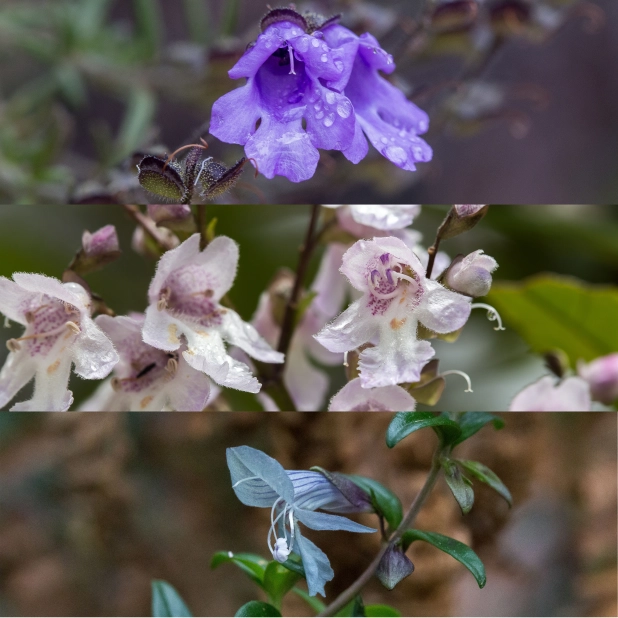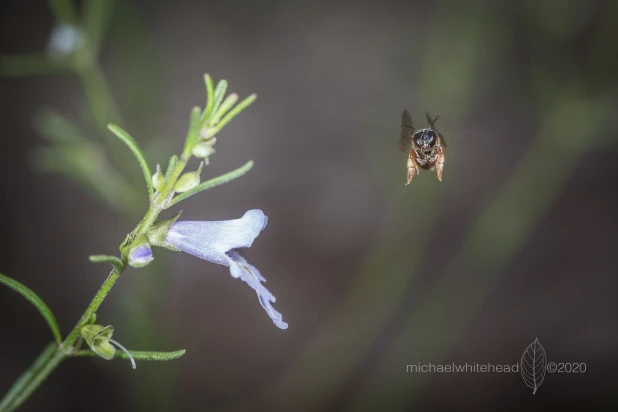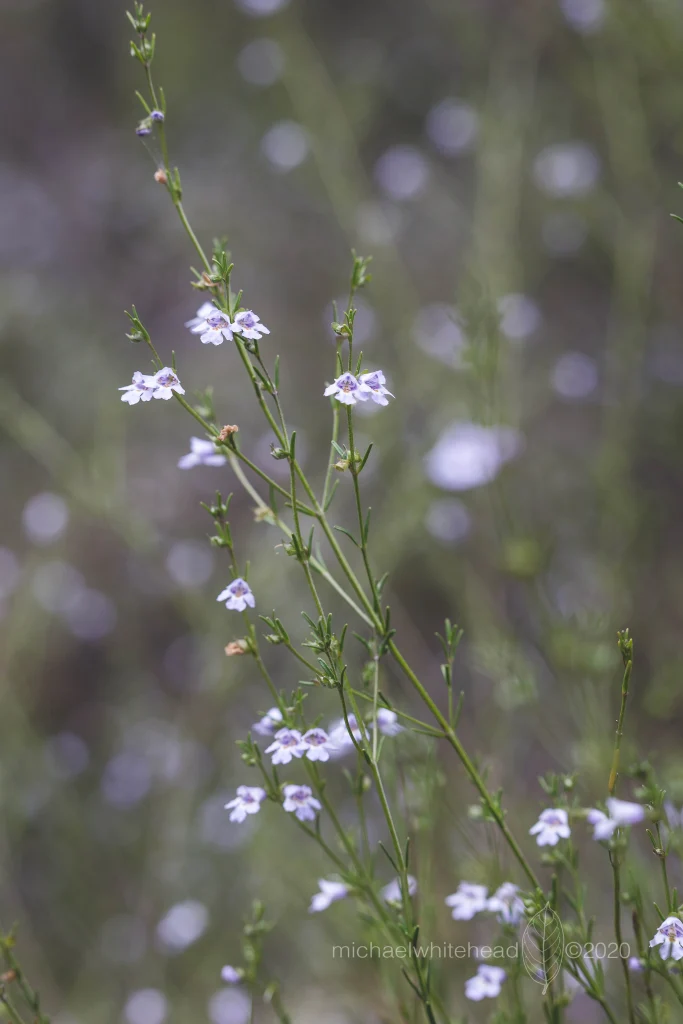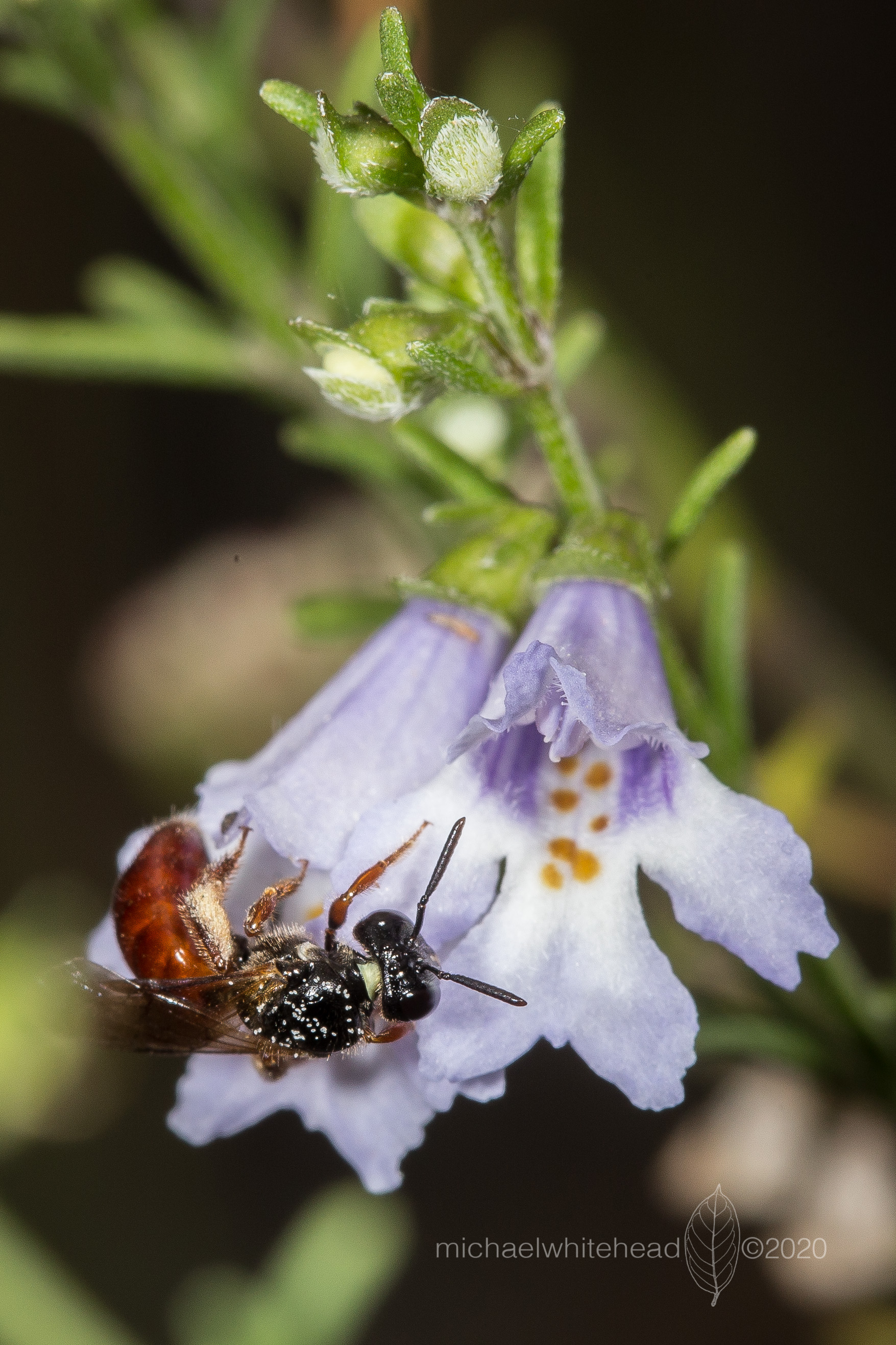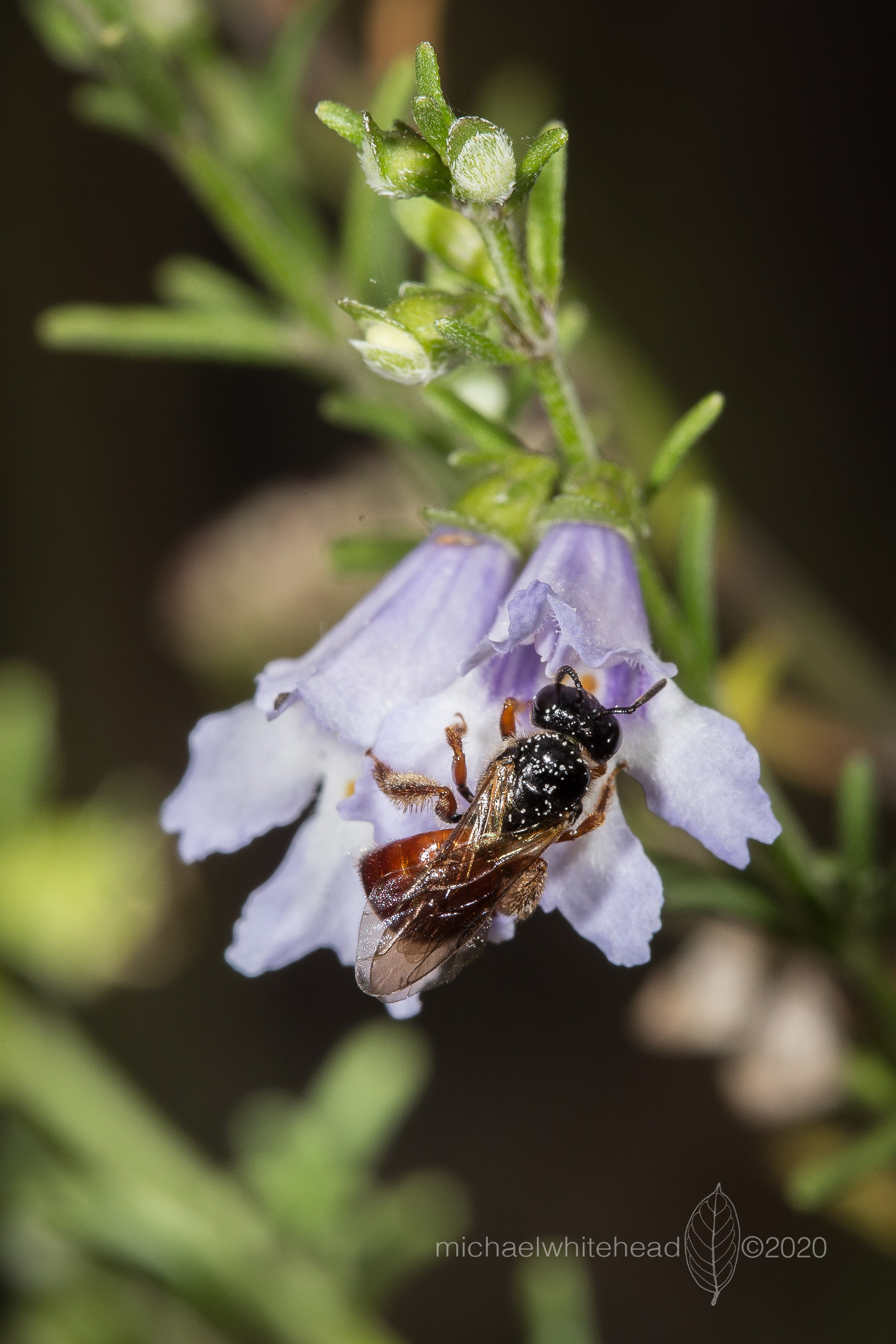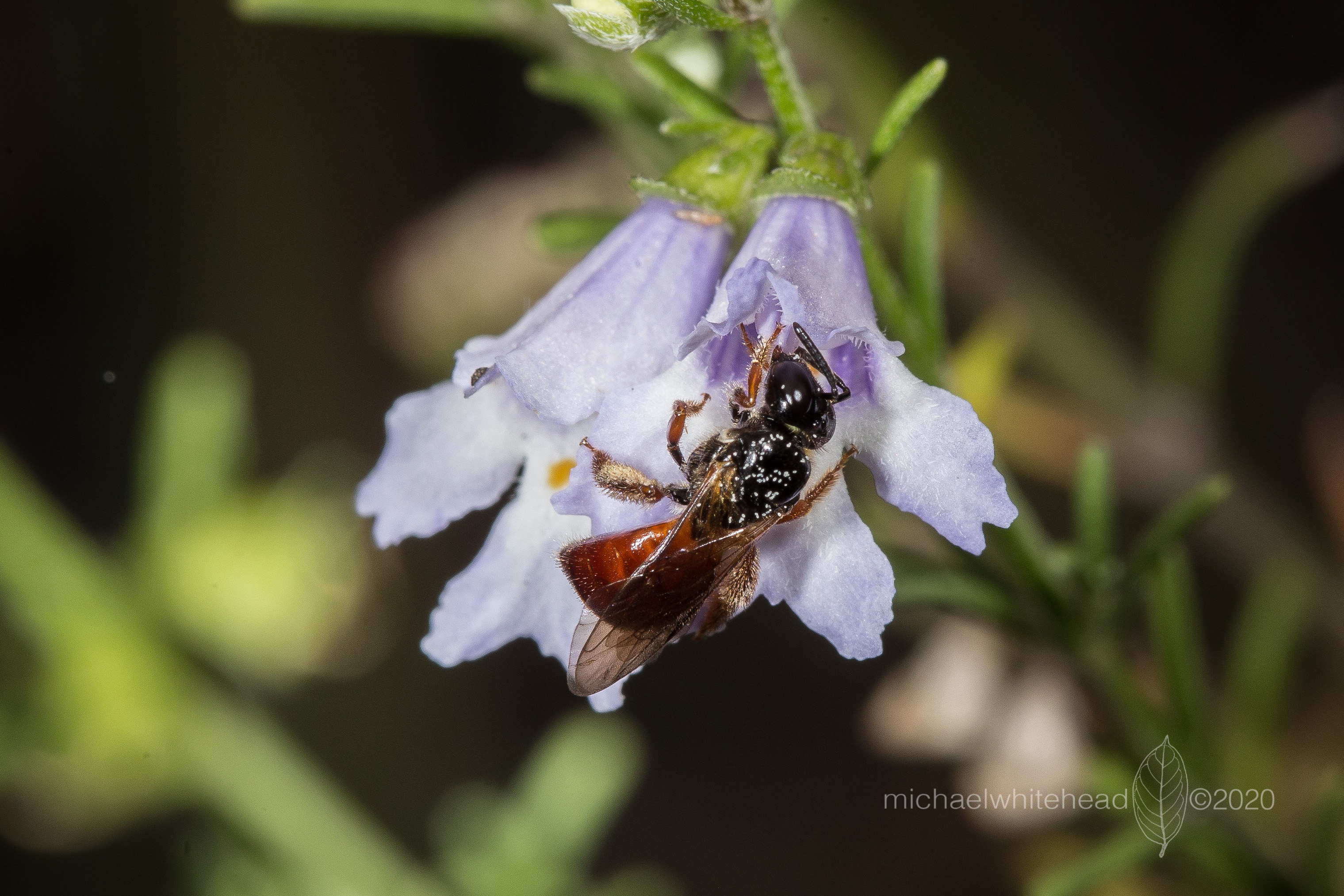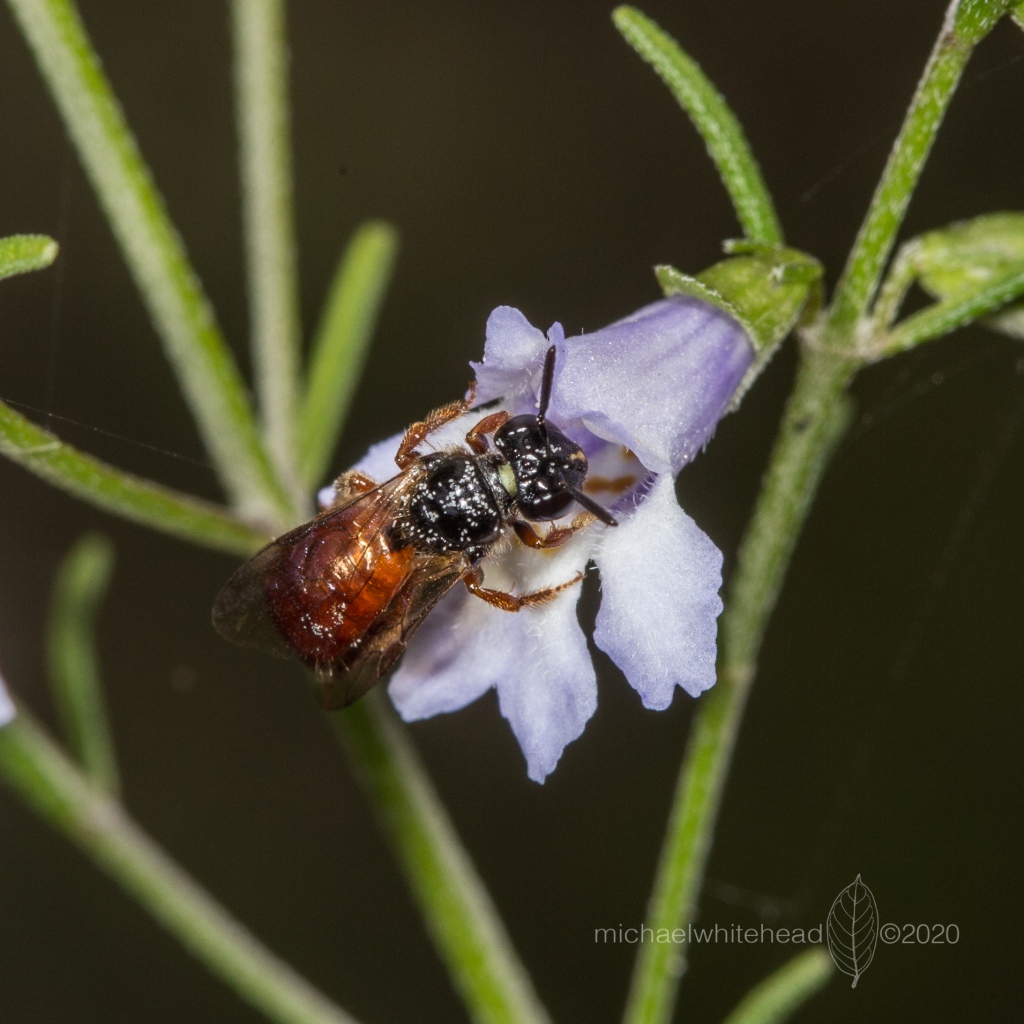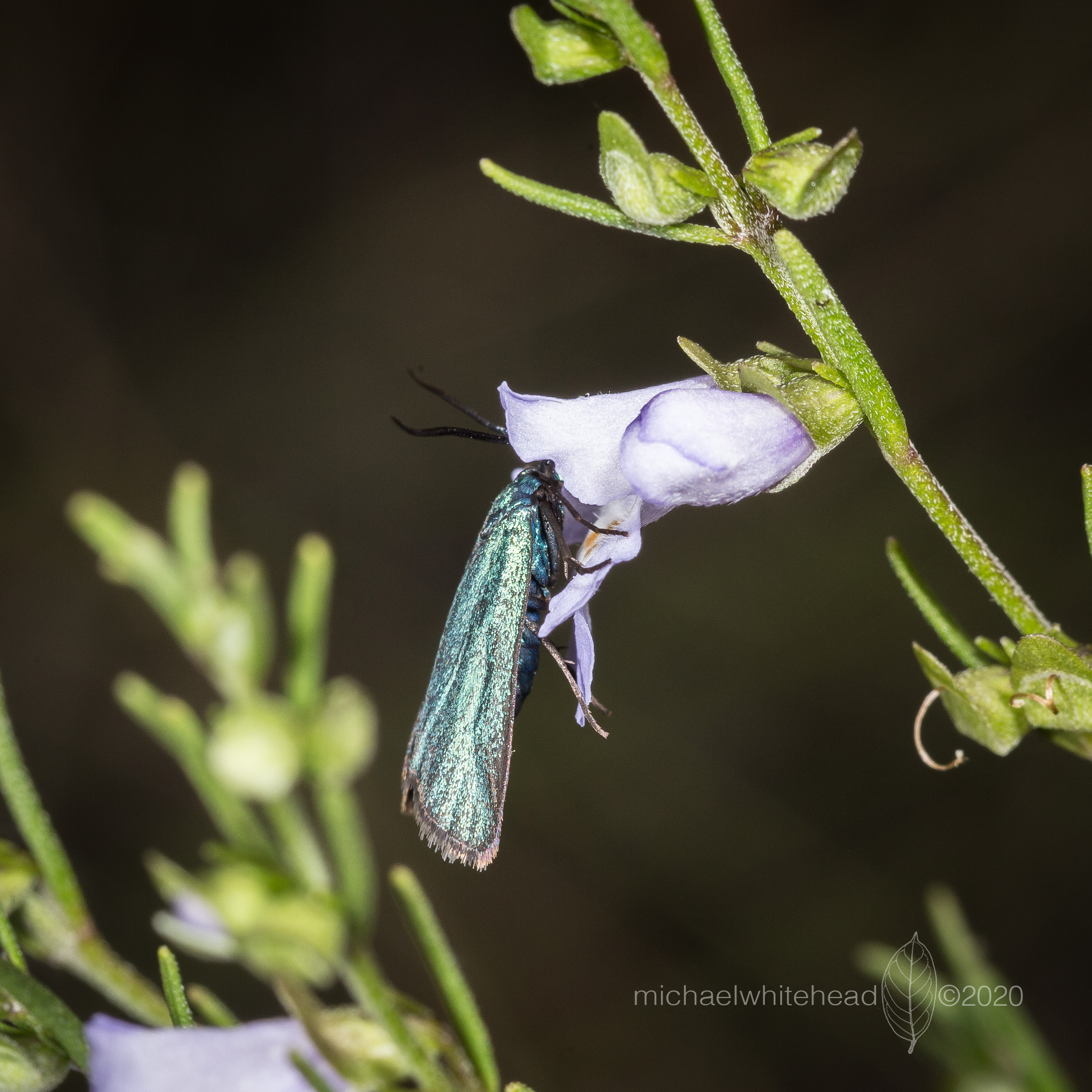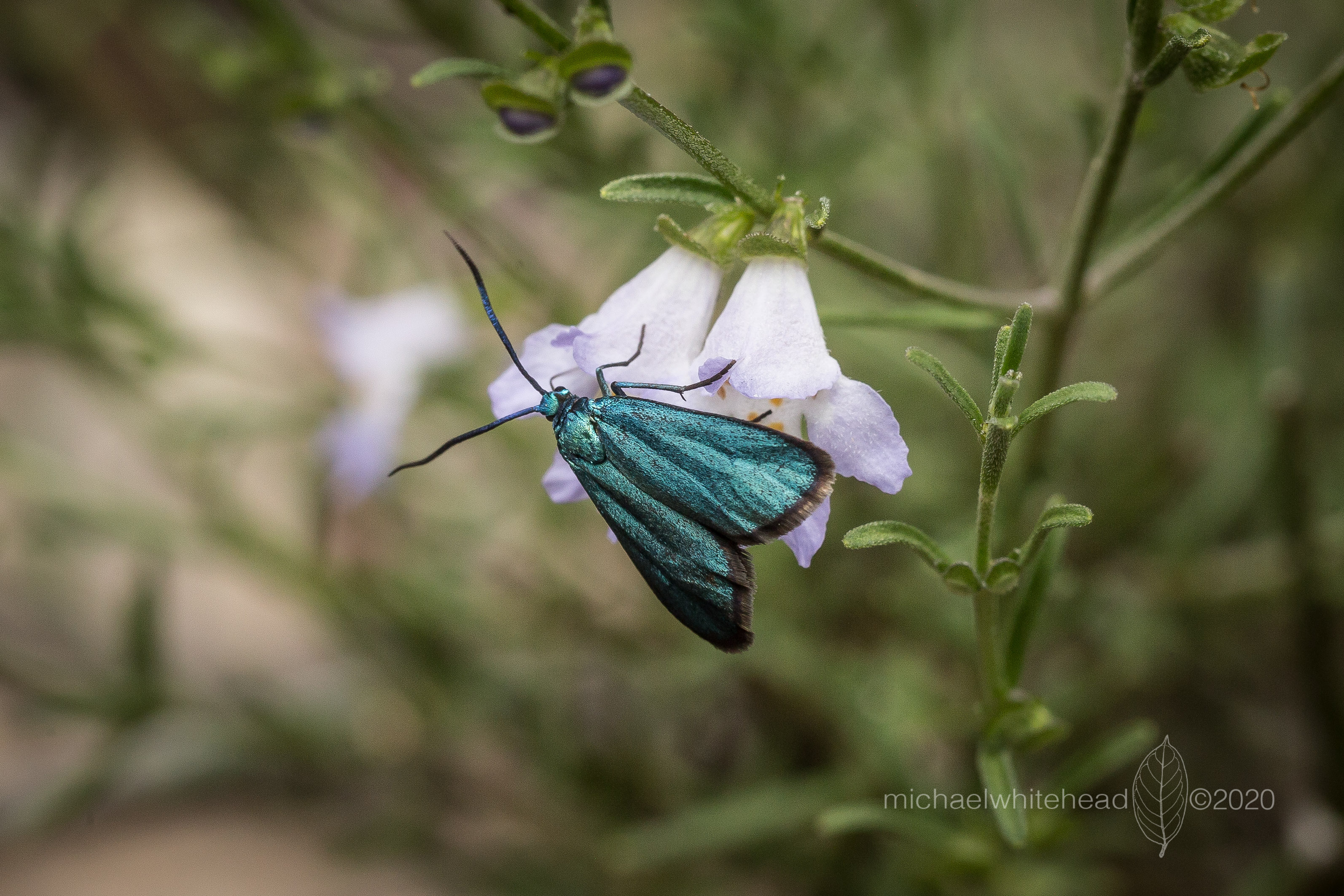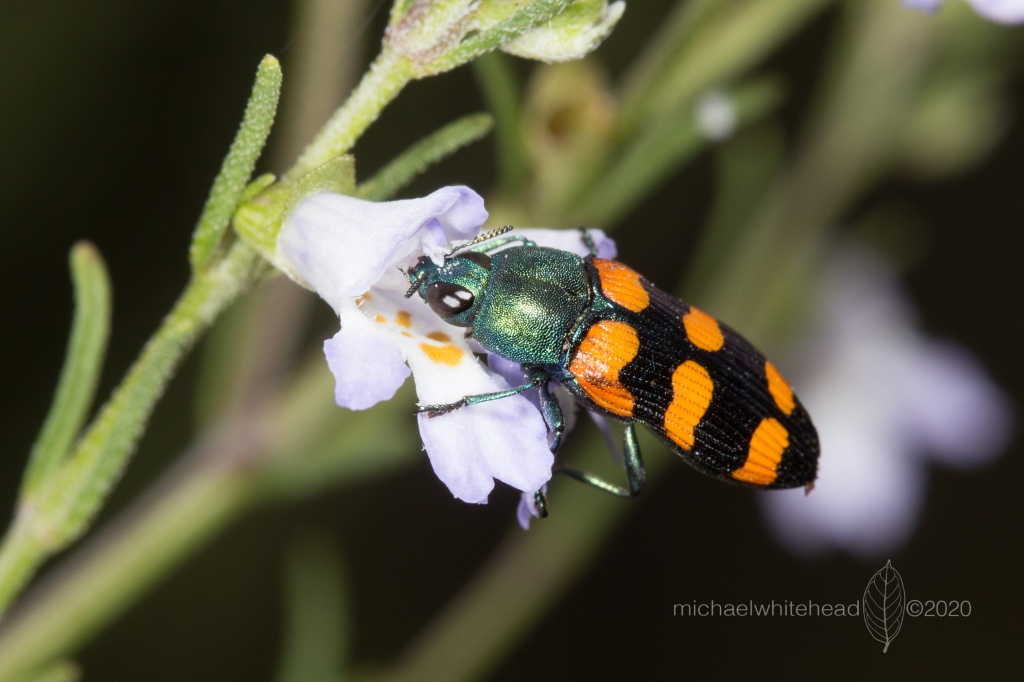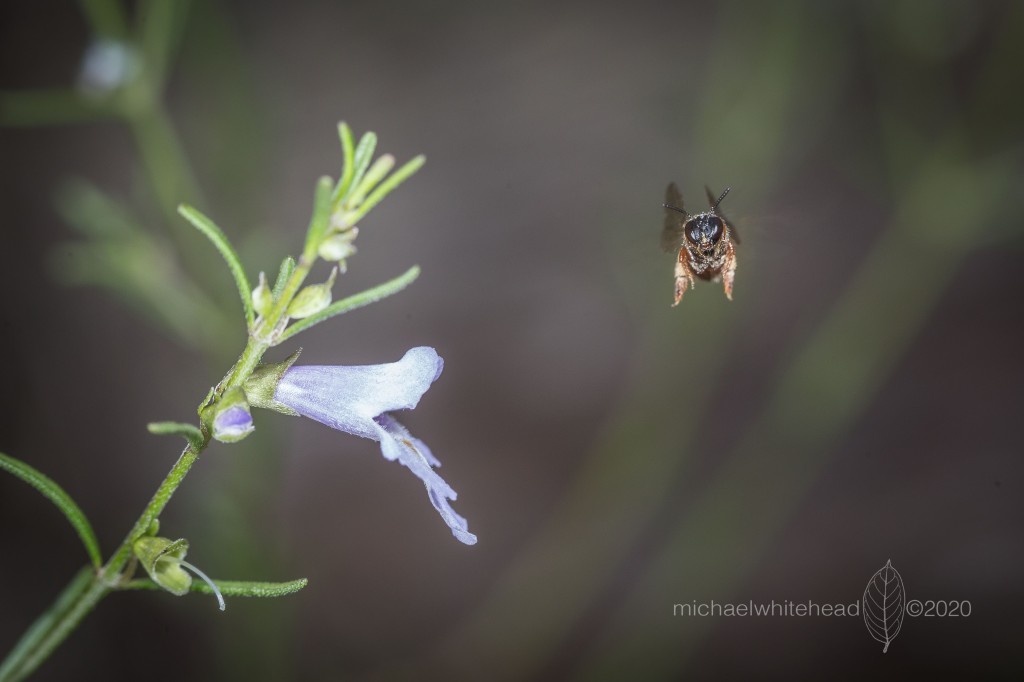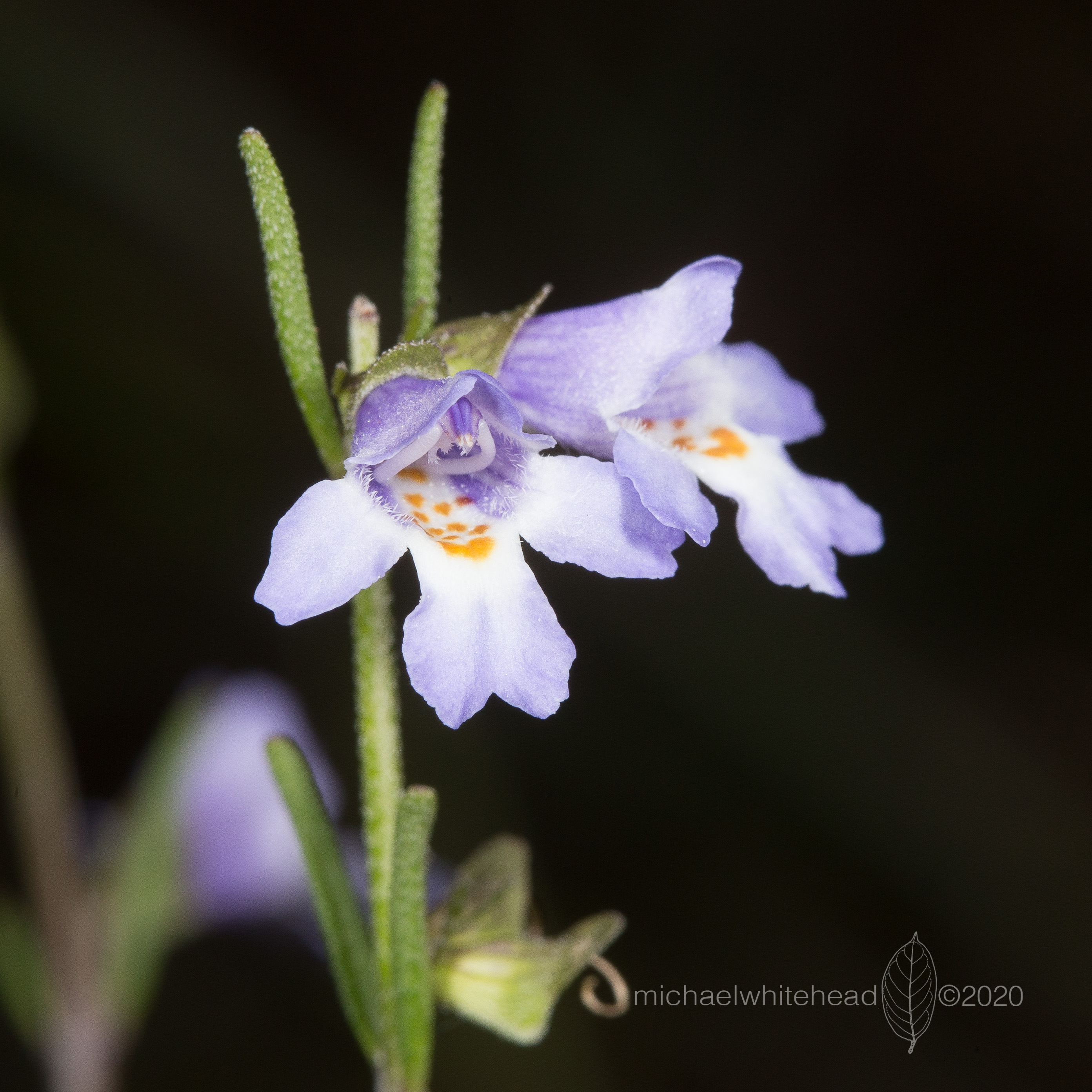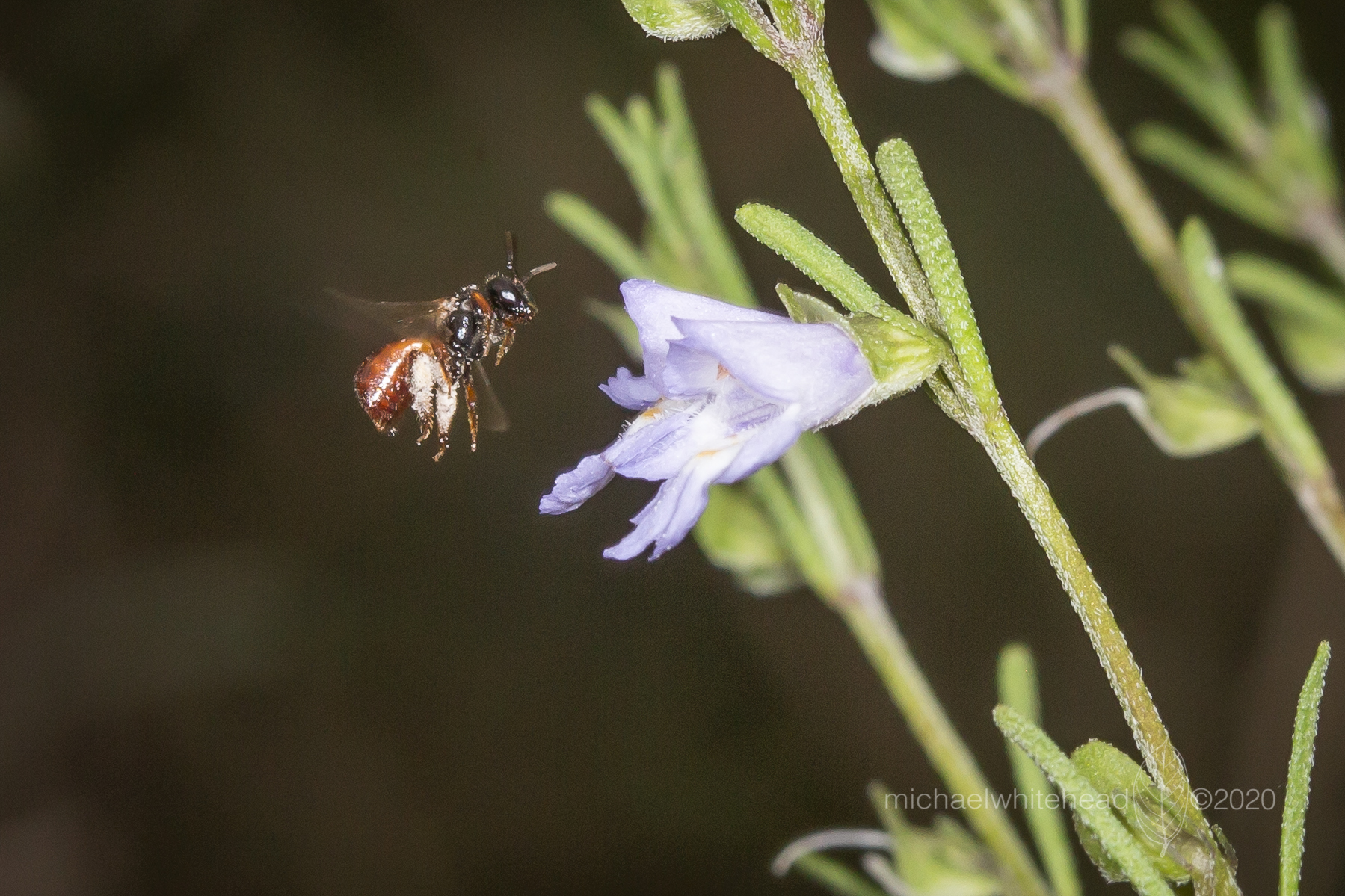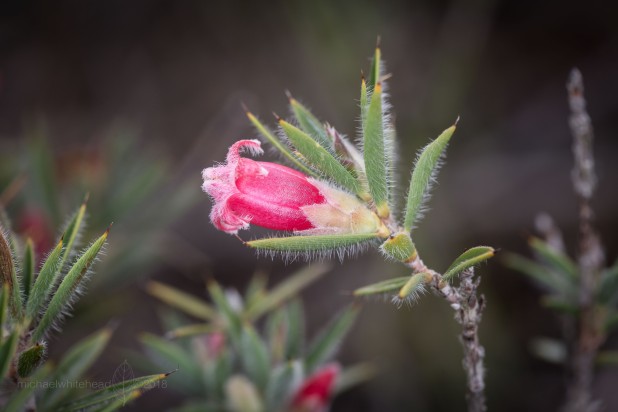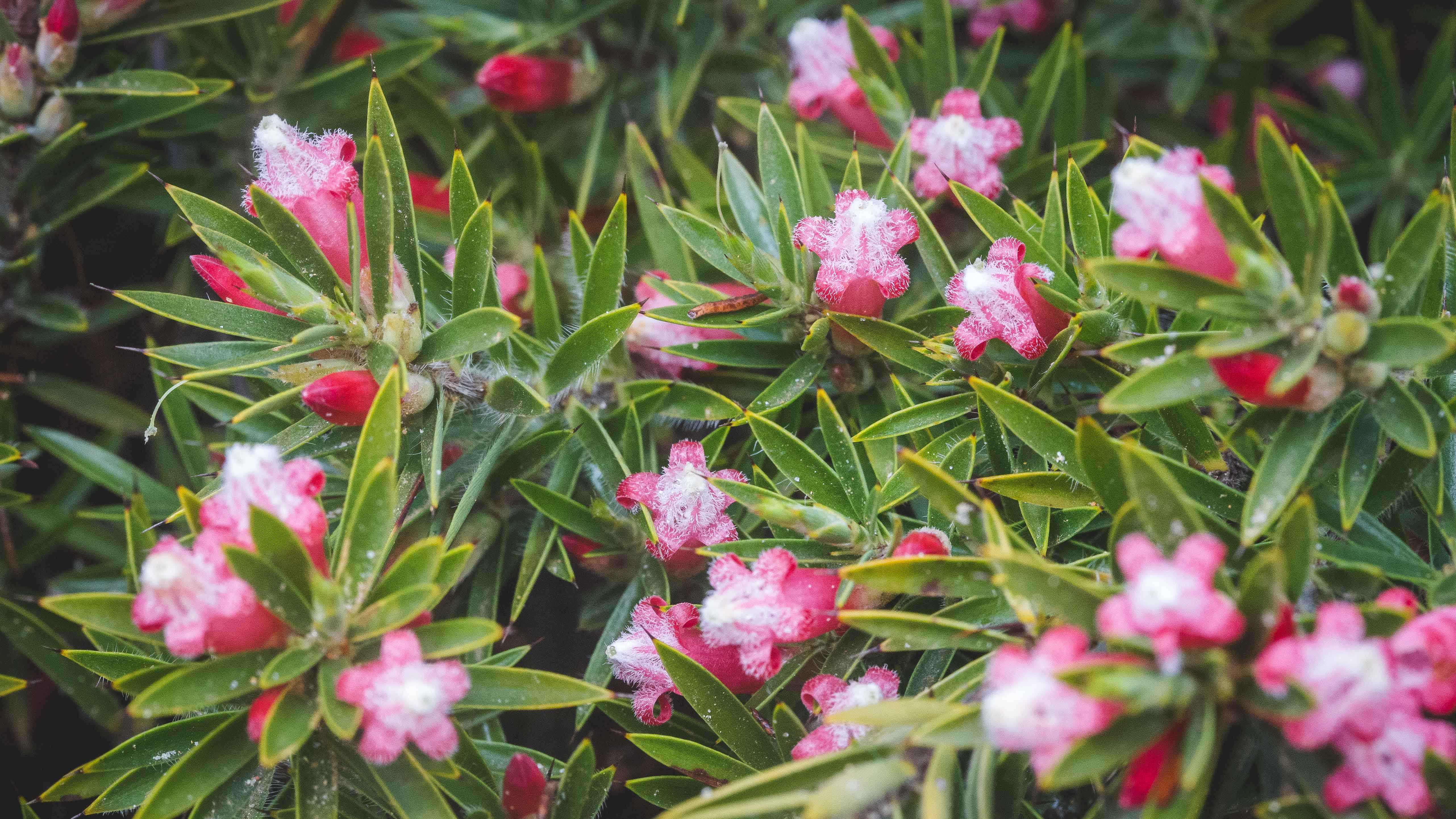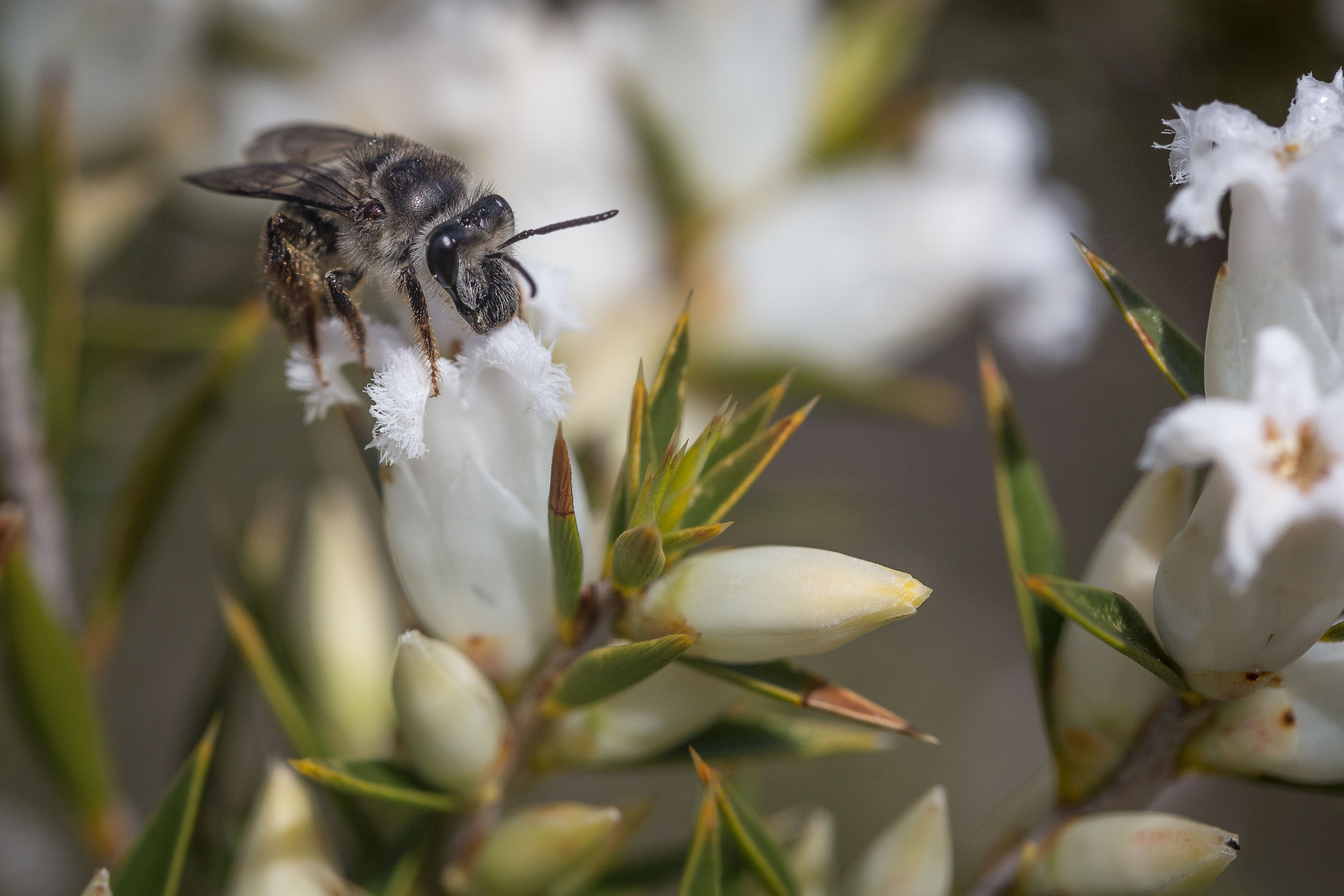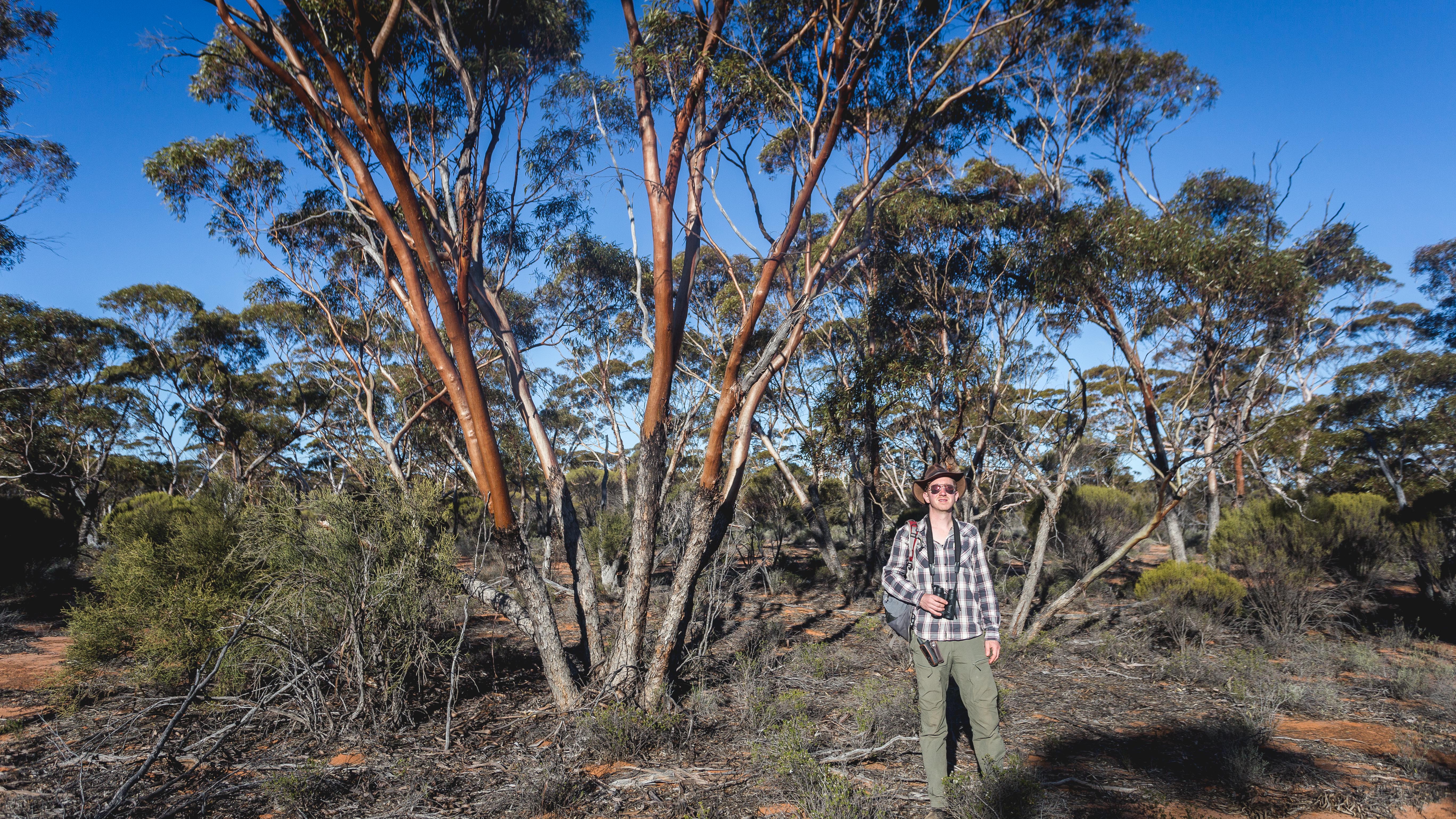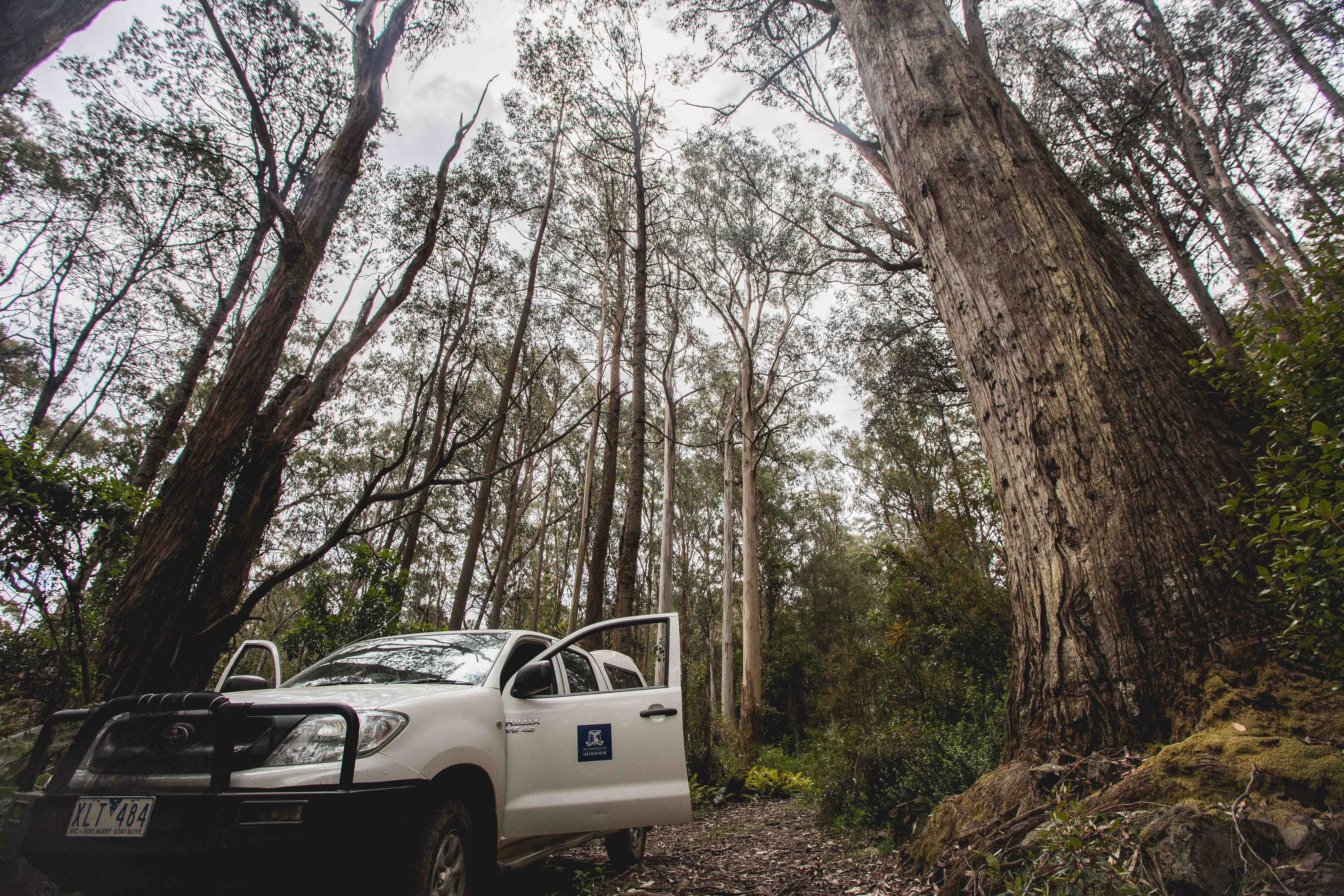Plants mate. In a manner far more elegant than our own mammalian shenanigans, and far more important for the ongoing survival of the Earth’s ecosystems, plants are out there constantly having sex. And it is a deeply interesting thing involving insects, and wind, and stigmas, and stamens, and enough puzzling evolutionary biology to fill journal articles and occupy a small handful of academic careers.
My latest paper is about plant mating, and rather than wade through meadows of blooms to collect the data for this effort, I remained desk-bound in Milwaukee, wading through 30 years of plant mating literature with the intention of assembling a dataset to help us see plant mating in a new light.

A mint-bush (Prostanthera lasianthos), caught in the act of mating.
As you may know, the flowers of many plant species are hermaphrodite, i.e. they bear both male and female sexual organs. This means plants can have sex with themselves. It’s called self-pollination, or “selfing”, and it can happen in two ways. First, pollen can move from the male parts of a flower to the female parts of the same flower. Second, on a single plant, pollen can move from the male parts of one flower to the female parts of a different flower.
“But isn’t this inbreeding??” I hear you ask, recoiling in horror at the moral and population genetic gutter down which I have so suddenly led you. Yes! Seed fertilized in a selfed flower is about as inbred as it gets, even more so than sibling mating. But you see, inbreeding is not always a bad thing—in fact inbreeding can actually be beneficial in some circumstances—and here’s where things get messy.
Genes are selfish. As such, they will do whatever it takes to get themselves propagated into another body. Consider then the selfish genes of a mother plant, which want to get into the next generation, and into as many individuals as possible. If a mother plant mates with a genetically different plant (an “outcross” mating event), its seeds each inherit approximately 50% of the mother’s genetic variation. This is because they combine with (and are diluted by) the genes of the pollen donor during pollination and sexual reproduction. On the other hand, if a mother self-fertilizes its own seeds, it transmits closer to 100% of its genetic legacy into each offspring. In the eyes of natural selection, this is a huge difference, and offers a great advantage to selfing over outcrossed reproduction.
So why aren’t all plants selfing all the time? This is because the huge advantage in transmitting genes via selfing is offset by the drawbacks of inbreeding. You can’t often get away with inbreeding without cost, and the cost is that inbred offspring are commonly less fit than their “outbred” siblings. Called “inbreeding depression”, this occurs because breeding from related individuals vastly raises the probability of combining rare genetic variants that harm the individual they are in. In the long run, inbreeding also reduces genetic variation that is essential for adapting to changing environments.
Evolutionary biologists have been pondering this tension for decades, and it led to the hypothesis that plants should be driven by natural selection into two polar opposite strategies: selfing plants should be favoured by natural selection when inbreeding depression is weak, and outcrossing plants should be favoured by natural selection when inbreeding depression is strong. Anything in the middle should not be adaptive, and should therefore be rare in nature. Sounds sensible, except numerous studies have now measured selfing/outcrossing across hundreds of plant species, and there is a curious and difficult-to-explain preponderance of plants that are neither exclusively selfing or outcrossing. These plants are having it both ways, seemingly hedging between strategies, and we call them the “mixed maters”.
Now for the problem my study addresses… Over the last 30 years, loads of studies have been measuring the selfing/outcrossing rate of plants in the wild. There have also been important studies which collect all these outcrossing estimates into big global datasets and generate observations like the one above: that mixed-mating is inexplicably common. For 30 years however, much of this discussion on global patterns was centred around average outcrossing per species, and using this to classify a species as a “selfer”, “outcrosser”, or “mixed mater”. We know evolution doesn’t work on a “species level” though. What is more appropriate is what is happening in a population context. And perhaps by averaging away all the variation within each species, my co-authors and I thought we might be missing an important perspective on the data.
What my co-authors and I did then was to collect all the outcrossing estimates from published papers containing three or more population outcrossing estimates. Going back 30 years, we collected data for 105 species and measured the variation in outcrossing within a species, among populations.
What we found was huge variation! There was commonly so much variation in mating within a species, that species averages felt inadequate for expressing where mating system variation lies. The data also showed that variation was difficult to predict. For example, there was an old hypothesis floating about that wind-pollinated plants were less variable in their outcrossing/selfing rate than animal pollinated species. The reason being that animals were thought to fluctuate more in their abundance and service between sites and seasons, while wind was a more consistent, reliable force for pollination. For the first time we were able to test this, and our analysis did not support the hypothesis. We also tested whether mating variation was evolving in a predictable fashion, but found that the relationship of plant species had no bearing on the variation we found in those species’ mating patterns.

Arabis alpina: revealed in our study as a species with one of the most variable mating systems measured. By Hedwig Storch CC BY-SA 3.0, from Wikimedia Commons.
Ultimately, our study can’t solve the mystery of why we have so many mixed-mating plants. What it does do though is present a new way to look at the known range of variation in plant mating. There are other analyses waiting to be done with the data collected here, and we have highlighted where more studies are needed to answer interesting questions. For example, do different kinds of animal pollinators result in more or less variable outcrossing? Or do populations on the fringe of a species’ range experience more or less variable outcrossing?
As the body of knowledge on plant mating systems continues to grow, this dataset will grow too, and this population-level perspective on plant mating will hopefully provide the basis for the next insights into evolution’s influence on plant mating.
Full reference:
Whitehead MR, Lanfear R, Mitchell RJ, Karron JD. (2018) Plant mating systems often vary widely among populations. Frontiers in Ecology and Evolution, 6:38.
Further reading:
Goodwillie C, Kalisz S, Eckert CG. (2005) The evolutionary enigma of mixed mating systems in plants: occurrence, theoretical explanations, and empirical evidence. Annu. Rev. Ecol. Evol. Syst., 36:47-79.
Schemske, DW and Lande, R. (1985) The evolution of self‐fertilization and inbreeding depression in plants. II. Empirical observations. Evolution, 39:41-52.
Barrett, SC and Harder, LD. (2017) The Ecology of Mating and Its Evolutionary Consequences in Seed Plants. Annual Review of Ecology, Evolution, and Systematics, 48:135-157.
